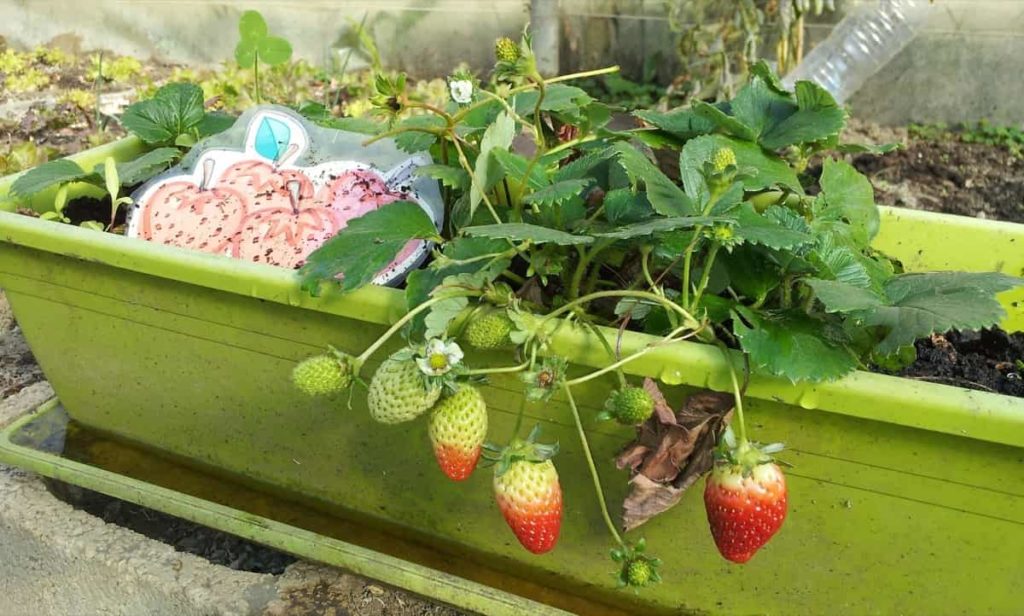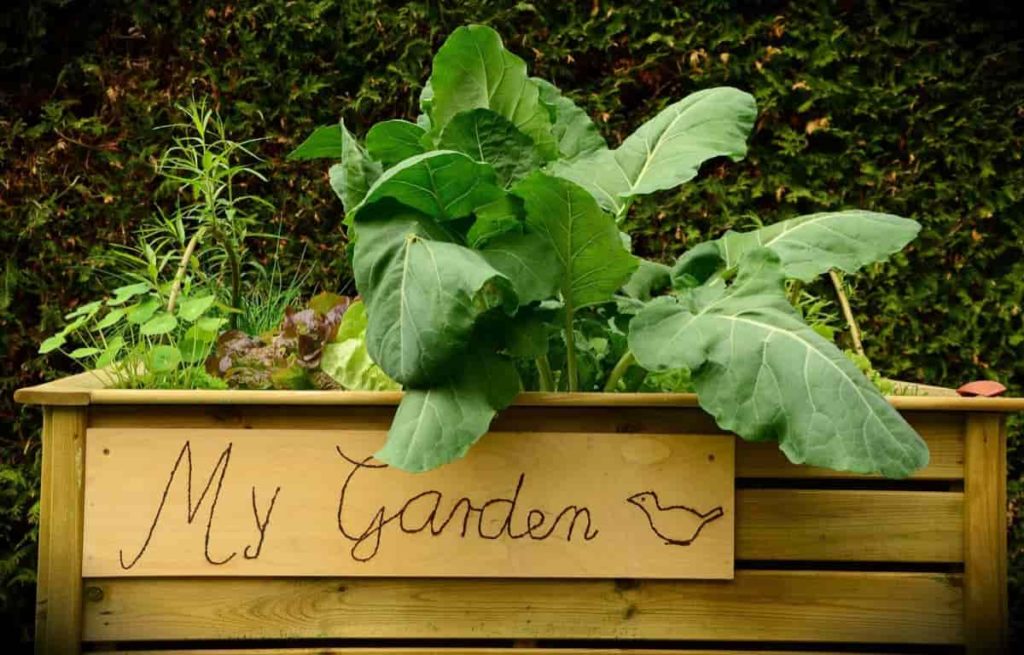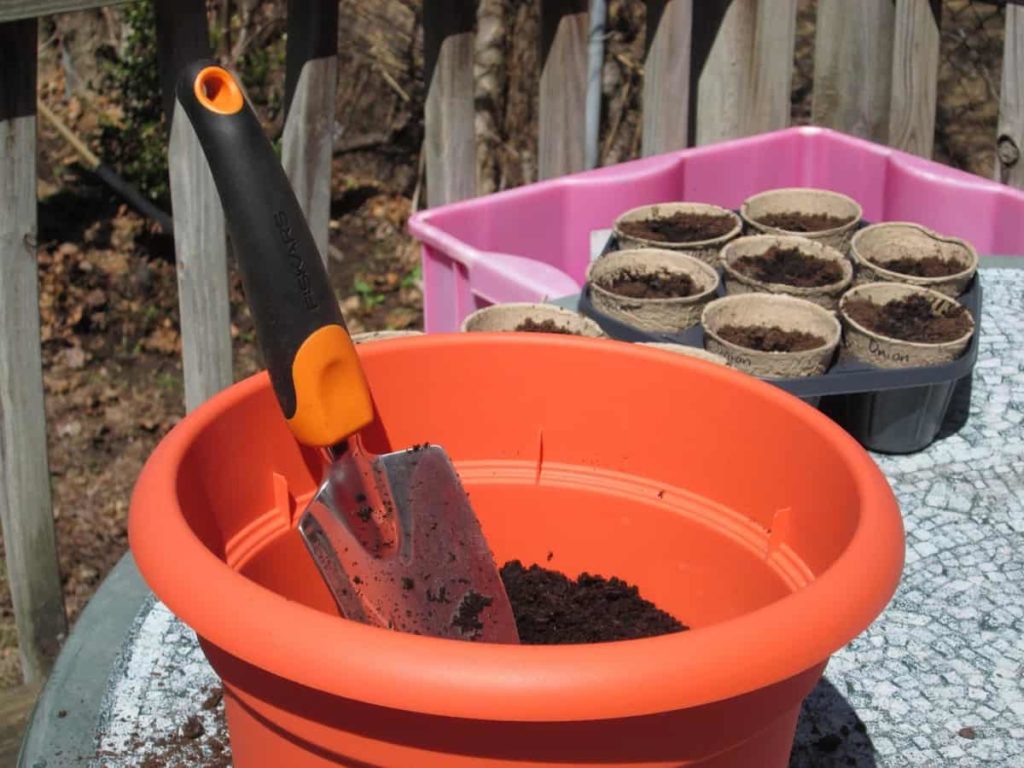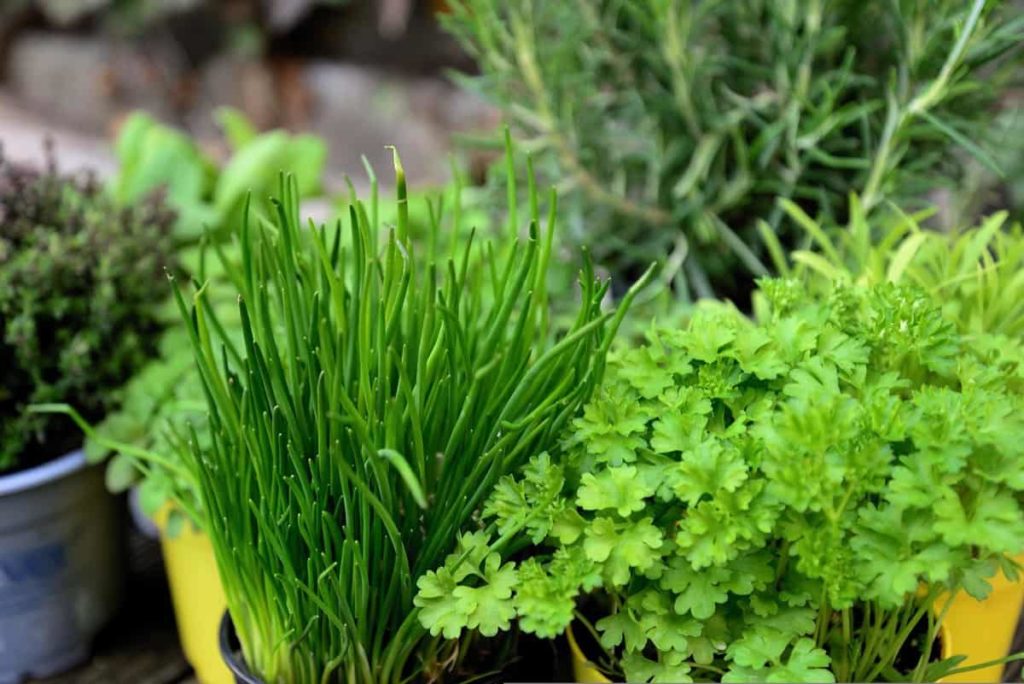Adding a plant to your house or yard can instantly make it more alive and welcoming. In addition to its aesthetic value, houseplants collect and filter harmful indoor air pollutants like dust and housekeeping chemicals via the leaves and roots of their stems and leaves. When you’re looking for some peace of mind, the color green can be incredibly soothing.

But it’s all right. Aside from taking care of the family, it might be a challenge to care for another living being. Plants may be remarkably resilient, even if we’ve ignored a few of them over the years. They can thrive without water, care, or sunshine for a lengthy time! We’ve listed some of the greatest houseplants in Singapore that take very little attention. Let’s check out more information about Singapore container gardening.
This article provides information about various plants suitable for HDB corridors and some easy plants to grow in Singapore in containers. This article could be our answer to how to plant vegetables in the HDB corridor, grow fruits in HDB, flowers, and herbs to grow at home in Singapore, and grow various herbs in Singapore. This article will show you to grow various plants in containers at your home in Singapore.
Singapore’s climate supports various plants
The temperature and barometric pressure are relatively constant throughout the year in Singapore, and the city-state receives a significant amount of rain. The typical temperature range for a room in Singapore is between 25 and 31 degrees Celsius. The temperature is most likely to be at its peak in the afternoon, while it will be lower in the morning and at night. The relative humidity fluctuates throughout the day, ranging from around 90 percent in the morning to approximately 60 percent in the middle of the afternoon.
The mean value is 84 percent. When there is continuous, heavy rain for an extended period, the relative humidity will often surpass 100 percent. There is a variance of 4 hPa in the pressure during the day regarding pressure. The highest possible pressure often occurs at 1100 and 2400 local time, while the lowest possible pressure typically occurs at 0500 and 1700 local time.
In case you missed it: Growing Vegetables In Singapore

More than 2,000 native plant species are in Singapore’s 277 square miles of land, all of which have evolved to a tropical environment north of the Equator. Temperatures often reach 85 to 90 degrees Fahrenheit during the day, while nighttime lows average about 80 degrees. Plants in Singapore can survive despite the country’s high humidity and rains. Despite their difficulties, they can achieve satisfactory results to give Singapore its worldwide image as a Garden City.
Singapore container gardening: Steps to grow plants in containers
Choose an ideal container
Containers can be bought, made, or repurposed to grow plants. Container material, size, color, and drainage are all significant considerations. It is important to choose the right container to protect the plant from stress caused by the container drying out too fast, restricting the plant’s root development, or roots lying in water and rotting. Your growth needs determine the kind of container you use.
More frequent watering is required for containers with pores and semi-pores than containers without pores. Plants that don’t need a lot of water should be grown in porous and semi-porous pots. Cacti and succulents benefit from the increased moisture loss.
Drainage
All containers need drainage holes to avoid root rot. If the container lies flat on a firm surface like a patio, 14- to 1/2-inch drainage holes can be installed around the edge. Double-pot herbs or a fruit tree if the container has no drainage holes. Never use gravel or rocks to enhance drainage in a container. Soil water collects just above the gravel. Overwatering can cause soil to become saturated if there is not enough air space left in a potting mix to allow water to drain down into the gravel.
Material
Unglazed ceramic pots should never be used for plants that will be left outside throughout the winter in container gardening. These pots will freeze and fracture if they contain any water. The soil temperature in outdoor pots can change by as much as 30°F throughout the day and night. Putting metal pots and tiny containers in direct sunlight might worsen this issue. Containers made of wood and plastic may be left outdoors all year round.
Without staining or painting, a cedar or redwood fence or deck can survive for around ten years before needing to be replaced. Even while heavy-duty plastic containers are the lightest, most moisture-retentive, and easiest to move near a protective wall for overwintering plants, they may lose their vibrant colors if left in full sunlight for an extended amount of time. Before using, rinse all containers with soap, warm water, and a non-bleach disinfectant.
Weight
When container gardening, we choose containers for aesthetics above horticultural necessity. For top-heavy, wind-exposed, or regularly moved plants, the weight of the container should be addressed. Porosity also matters. Overwatering container plants require a porous container. Underwatering container gardeners should use nonporous containers to retain moisture.
In case you missed it: Growing Bougainvillea Indoors – A Full Guide

Size
For two reasons, the size of the container should correspond to the plant’s growth needs. Restricted root development, in turn, reduces the growth of plants. Physical stress on the plant significantly reduces root and shoot development, known as root limitation. Second, the amount of fruit and flowers produced by plants grown in tiny containers similarly decreases. Consider both the container’s depth and its overall capacity.
On the other hand, Larger containers need less watering since they don’t dry up as rapidly. Annuals like lettuce, radishes, and scallions need a potting mix depth of 6 to 8 inches, while carrots prefer a potting mix depth of 10 to 12 inches for optimal growth. To cultivate most herbs, you need a 4 to 6 inches container diameter.
Select the potting mix
It is essential to fill your pots with the soil of a good grade for optimal results. You shouldn’t use regular garden soil in your pots since it won’t drain correctly if you do. You can either purchase potting mixture from a gardening nursery or make your own by combining equal parts of organic compost, red soil, and vermicompost in a mixing container. When potting soil for containers, fertilizer and lime should be included.
The addition of fertilizer provides the plant with nutrients necessary for its development. Calcium and magnesium, two of the necessary elements, can be obtained from lime. In addition to this, it brings the pH of the soil into a range that is optimal for the development of plants.
Prepare the pot
Be certain that the container includes a hole in the base that can be used for drainage. Since mud can clog the hole, placing some stones on top will ensure proper drainage. One can paint the pot and express individuality via different colors and patterns. Be very careful not to paint the inside of a container since the chemicals from the paint might potentially leach into the soil.
In case you missed it: Oklahoma Container Gardening: Beginner’s Guide for Vegetables, Fruits, Herbs, and Flowers

Remove the nursery plant
Before taking the plant from its packing at the nursery, could you give it a water spray? When the soil is watered, it becomes moist and compact, which reduces the risk of foot injury during the transplanting process. Remove the label of the package with the scissors. Take the packet out from below the plant, then use your hand to hold the plant’s base as you take the package out from underneath it.
If the plant is confined inside a container, tilt it slightly while keeping the top layer of soil supported with one hand. Now use the other hand to knock the plant out of its container gently. You can loosen the soil by tapping the edges of the container. Never remove a plant by its stem since the soil’s weight might separate the roots and stem, killing the plant.
Start planting
Position the plant so that its topmost leaves are almost touching the surface of the container. The leftover space should be filled with soil. Shake the pot in a controlled manner to compact the soil down. If necessary, add some additional soil. However, you shouldn’t compact the soil by pressing down on it.
Allow some gap in it so that the roots can get some air. Growing plants in a container To prevent either water or soil from overflowing the container, fill the soil to within approximately 1 inch of the top. Last but not least, give the soil a few drops of water here and there to remain moist and porous.
Fertilise your plants
To fertilize the soil to ensure that the plants in your containers get the nutrients they need for healthy growth. If the soil in the pots has not been fertilized, you can provide your plants with a head start by adding some organic compost to the soil. Before planting their greens, many gardeners sprinkle their soil with granular organic compost from the top down, and they repeat this process many times during the growing season.
Growing vegetables in containers in Singapore
Cherry tomatoes: Cherry tomatoes are easy to grow in Singapore since they resist Singapore’s hot and humid weather. They thrive in well-lit settings and wonderfully fit tiny spaces like windowsills or HDB corridors. Tomatoes require at least six hours of direct sunshine every day, so don’t shade them. Your seedlings will thrive if you water them at least twice a day.
In case you missed it: Easy Plants to Grow at Home in USA: For Containers, Backyard, Patio, and Indoors

Chilli peppers: Chilli peppers are most common in Singapore cuisine. You’ll get greater outcomes in the growing process if you rinse and dry your seeds overnight before planting them in your pots and soil. Chilies don’t like wet soil. Thus, every 2-3 days is a good watering schedule.
Kangkong: Kangkong likes moisture and heat. Because they’re quick-harvesting and don’t need a horticultural degree, they’re great for beginners. In this case, 4 to 6 hours of sunshine is required. Even if you forget to water them, they’ll keep growing.
Okra: Like tomatoes, these plant pods need at least six hours daily light. You won’t require cuttings or transplants since they grow best from seeds. Once they grow 17-22cm, you can easily pick them.
Bayam: Growing Bayam in containers is a simple task. Bayam is the only vegetable that thrives after harvesting. But to harvest more than you sow, be sure to trim some leaves from your developed plants while keeping one or two left to keep your garden expanding. Bayam seeds are simple to get in nurseries and shops, but cuttings can also work. Transplant them into the soil after soaking the bottom 15cm of a good bundle of spinach leaves for a week.
Growing flowers in containers in Singapore
African violets: African violets are white, blue, and purple. These are small houseplants with clusters of purple blooms. Its beautiful blossoms can beautify your homescape. Water African violets carefully. Use lukewarm or room temperature water to prevent leaf rot. Always keep your soil moist. South or west-facing windows are the best places to place the containers.
Orchid: As Singapore’s national flower, orchids flourish in the local climate. Orchids vary in colour and design. Phalaenopsis orchids are one of the simplest to cultivate at home since they need minimum maintenance and can flower for months or years. In indirect sunlight, moisten the soil every few days. Overwatering causes root rot.
Sunflower: Easy-to-grow flowers include sunflowers. Sunflowers will brighten your home. Sunflowers grow towards the sun and flourish in full sun. Sunflower seeds grow. Please put it in the sun outside or near a window. Daily watering will help sunflowers flourish. Red, orange, maroon, and brown sunflowers exist.
Peace lily: Peace lilies can grow inside without direct sunshine. The elegant shape makes them a good indoor plant. The green foliage and white petals will make your home seem majestic. Place them beneath a window or balcony with partial sunlight and water them once a week. When the peace lily hasn’t been watered for an extended period, it may drop, a warning sign.
Anthurium: Anthuriums are common in hotel lobbies and conference centers. Anthurium flowers, often called Flamingo Lilies, have crimson bracts that wrap around yellow flower stems. Anthuriums like mild sun and water. It needs indirect sunshine and weekly or as-needed watering. Before watering, let the soil dry fully.
Growing herbs in containers in Singapore
Rosemary: Rosemary needles have a strong, woodsy aroma with citrus overtones. Rosemary tastes piney and harsh. Instead of planting rosemary seeds, use cuttings in the tropics. Rosemary likes full sun and sandy soil.
Thyme: Thyme is earthy and minty like rosemary. This sun-loving Mediterranean plant requires extra care in Singapore’s humid environment. Plant in well-draining soil and an airy position to avoid wetness.
Lemongrass: This zesty herb is appreciated in Asian dishes, especially Thai, for refreshing fatty stir-fries and rich seafood. This adaptable tropical plant prefers well-drained, nutritious soil. In a sunny location, nice moisture is required.
In case you missed it: North Carolina Container Gardening: For Vegetables, Herbs, Fruits, and Flowers

Cilantro: Overly hot and dry circumstances, such as in Singapore, cause coriander to bolt. Water it often and keep it in the shade throughout the hotter parts of the day.
Basil: Most people are familiar with Thai basil and sweet basil. Basil is a sun-loving, easy-to-care-for plant. Place in wet soil near a window and water often.
Growing fruits in containers in Singapore
Lemons: Lemons are low-maintenance and simple to cultivate in pots. As they’re tropical, they are suitable for Singapore’s climate. Make sure the container you choose has lots of drainage holes.
Pineapple: The pineapple, which stops snoring, is a bromeliad and needs comparable maintenance. They’re perfect for pots since they rarely grow taller than 120cm. Pineapples thrive well in warm, humid areas, making them wonderful interior plants. They’re drought-tolerant and grow slowly without adequate water, although under-watering is more tolerable than over-watering.
Mulberries: These classic, tasty beauties grow quickly in pots. Pruning after fruiting keeps plants compact and stimulates more fruit. They’re deciduous, bringing warmth and brightness to your patio or yard in winter.
Avocados: Avocados grow well indoors. Move the germinated pit to a 10-inch unglazed terracotta pot twice as deep as the roots. Compost-and-sand potting mix is loose and fast-draining. Indoor avocado containers need intense light. Without light, plants wilt. Pinching excess growth promotes a bushier, stronger plant.
Plum trees: Plum trees like moisture. This tree needs loamy, rich, well-drained soil—no wet clay. Add organic matter to soils to get tasty fruits.
- How to Grow Tomatoes Organically at Home: A Comprehensive Guide
- Organic Gardening on a Budget: Low-Cost Methods and Materials
- Gongura Seed Germination and Planting Methods
- Cabbage Seed Germination and Selection
- Broccoli Seed Germination and Selection
- Asparagus Seed Germination and Variety Selection
- Seasonal Flower Gardening: Best Practices for Spring, Summer, Fall, and Winter
- How to Grow Hibiscus from Flower
- Plantation Ideas for Home Decoration: A Beginners Guide
- Flower Garden Designs and Layouts for Beginners
- Planting and Spacing Techniques in Papaya: A Beginner’s Guide
- Growing Gold: Essential Techniques for Planting Pineapples
- How to Make Kalanchoe Plant Bushy: Home Remedies and Solutions
- 11 Reasons Why Your Gardenia is Not Blooming: Home Remedies and Solutions
- Eco Elegance: The Guide to Designing a Drought-Tolerant Landscape
- Gardening on a Slope: Strategies for Hillside Landscaping
- Nourish and Flourish: Top Organic Mulches for Thriving House Plants
- Everything You Want to Know about Indian Mogra Flower: Discover Uses and Growing
- Green Thumb Success: Expert Tips for Cultivating Greenhouse Pumpkins All Year Round
- Maximize Growth & Flavor: The Ultimate Guide to Companion Planting in Herb Gardens
- How to Control Rhododendron Problems Naturally: Home Remedies and Organic Ways to Fix Them
- Natural Magic: The Remarkable Benefits of Cinnamon for Plants
- Best Steps to Revive Dying Tulip with Natural and Organic Treatment
- 10 Reasons Why Your Angel Trumpet is Not Blooming: Remedies and Treatment
- How to Fix Periwinkle Leaf and Flower-Related Problems: Natural Remedies and Solutions
- How to Fix Zinnias Leaf and Flower Problems: Discover Natural and Home Remedies
- Organic Steps to Induce Lemon Tree Flowers: A Comprehensive Guide
- Bloom Booster: Crafting the Perfect Homemade Bougainvillea Fertilizer
- Optimizing Growth: A Guide to Applying NPK Fertilizer for Potted Plants
- 10 Best Homemade Fertilizers for Rubber Plant: DIY Recipes and Application Method
- How to Boost Female Pumpkin Flowers: Effective Steps for More Flowers and High Yields
- Transform Your Indoor Garden: Top Benefits of Pink Salt for Houseplants
- 10 Best Homemade Fertilizers for Peacock Plants (Calathea): Easy DIY Guide
- Unlock Blooms: 9 Reasons Why Your Potted Chrysanthemum is Not Blooming
- 8 Reasons Why Your Potted Hibiscus is Not Blooming: Fix it with Simple Solutions
- Unlock Blooms: 9 Key Reasons Your Potted Frangipani Won’t Flower